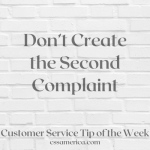If more students stay for four years, then more will graduate. Hmmm. It’s so simple…it’s brilliant!!
But there’s one problem – how do you get students to stay?
In the article Better student retention will help graduation rate, it’s noted how Oklahoma University’s President, David Boren, is trying to increase its graduation rate by increasing year-to-year retention of students – particularly from the Freshman to Sophomore year when the greatest loss occurs.
While this is a smart strategy, the meat of any strategy is based on understanding the true root causes of student loss. So here are four items to determine if you want to get at the causes of student loss and the strategies for retention:
- Determine if you’re accepting the right students for your college/university. Review characteristics (financial, demographic and otherwise) of past students who have graduated and note differences from those who did not graduate. Make sure you’re accepting those with profiles that tend toward graduation.
- Determine students’ technical/educational preparedness for success. Understand the cognitive/educational/learning skills vital for success so that a plan can be developed upfront to address any barriers to success.
- Determine students’ personal/social preparedness for success. Learn about the social “baseline” of incoming students to ensure that – where a plan or resources are needed – students are helped to assimilate into the college culture.
- Determine students’ expectations of the experience. Ask what they expect, manage unrealistic expectations upfront, and create plans that enable students to have the best chance of getting those expectations met.
Gauge each student’s likelihood for success, so that their time and yours are well-spent on their collegiate journey.
Interested in improving your company’s customer service? See more at our new website! http://www.cssamerica.com/





















